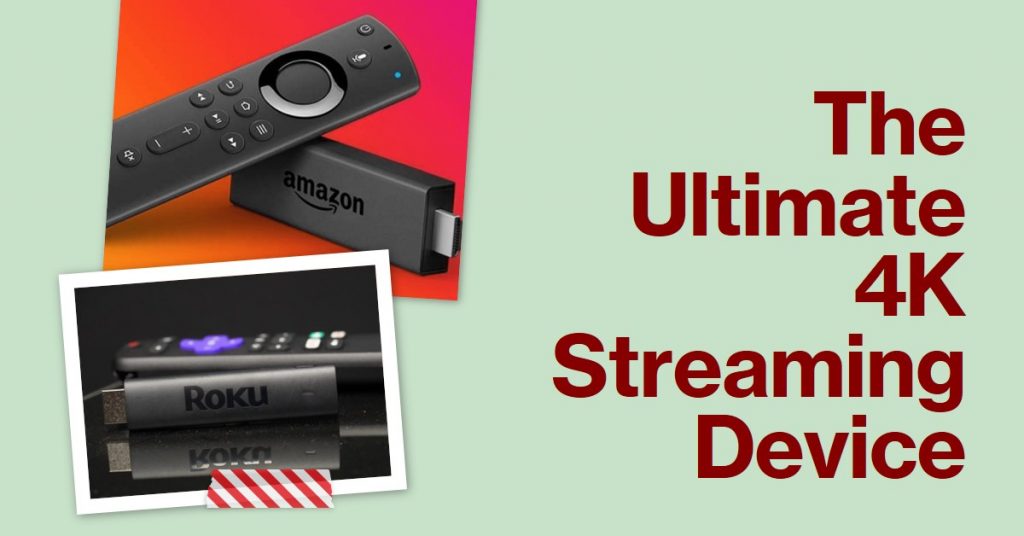Choosing the best 4K streaming device can be overwhelming with so many options on the market. Among the top contenders are the Roku Streaming Stick 4K and the Amazon Fire Stick 4K. Both offer excellent features for high-quality streaming, but which one reigns supreme in 2024?

In this in-depth comparison, we’ll explore their differences across various factors such as video quality, user interface, app availability, voice control, and pricing to help you decide which one suits your entertainment needs better.
Key Takeaway Table
| Feature | Roku Streaming Stick 4K | Amazon Fire Stick 4K |
|---|---|---|
| Price | Stable, slightly higher | Frequent discounts during sales |
| Voice Assistant | Roku Voice Remote (No AI assistant) | Alexa integration |
| Video Quality | 4K, Dolby Vision, HDR10+ | 4K, Dolby Vision, HDR10+ |
| App Support | Free channels, ad-supported options | App-driven, subscription focus |
| Design | Compact, easy to install | Slightly larger, includes HDMI extender |
| Smart Home Integration | Limited smart home controls | Full Alexa smart home integration |
Video Quality: A 4K Showdown
When it comes to 4K streaming, both devices are evenly matched in terms of video quality. The Roku Streaming Stick 4K and the Amazon Fire Stick 4K both support 4K Ultra HD resolution, Dolby Vision, and HDR10+, which provide stunning picture quality with vibrant colors and deep contrast.
However, one subtle difference lies in how each device handles HDR content. Roku’s processing tends to be more neutral, delivering a natural color palette, while Amazon’s Fire Stick can appear slightly more saturated due to its deeper integration with Dolby technology. For instance, if you watch a nature documentary, you might notice richer, more saturated colors on the Fire Stick, which some viewers prefer.
For those who prioritize a balanced, natural image and occasionally watch content across multiple streaming services, Roku offers a slightly smoother experience, especially in scenes with rapid movement. That said, the Fire Stick excels when paired with Amazon Prime Video content that supports Dolby Vision, particularly for users who prefer the intense contrast and saturation Dolby Vision can deliver.
Verdict: Tie — Both devices are excellent in terms of video quality, and the difference is a matter of personal preference.
Interface & Usability
The user interface is where these devices start to diverge more significantly. Roku’s interface is designed for simplicity. The home screen is straightforward, showing icons for all the installed apps in a grid format. It’s user-friendly, intuitive, and not tied to any specific streaming service, which makes navigating through apps quick and hassle-free.
On the other hand, Amazon’s Fire TV Stick integrates deeply with Amazon Prime Video. You’ll find content recommendations from Amazon right on the home screen, often prioritizing Prime Video over other apps. While this can be a good thing for Prime members, non-Prime users might find this approach less convenient as they need to navigate around Amazon’s recommendations to access other apps like Netflix or Hulu.
Additionally, the Roku Streaming Stick 4K offers a universal search feature that aggregates content across all apps, showing where you can stream a movie or show for free or at the lowest cost. Fire Stick has a similar feature but heavily leans towards content from Amazon’s ecosystem.
Verdict: Roku Wins — For users seeking a clean, ad-free, and unbiased interface.
Voice Control & Smart Home Integration
One of the standout features of the Amazon Fire Stick 4K is its integration with Alexa. With the Fire Stick, you can use Alexa voice commands to search for content, control playback, and even manage your smart home devices like lights and thermostats. This makes it ideal for users who already have an Alexa-enabled ecosystem. If you’re using Amazon Echo speakers, the Fire Stick integrates seamlessly, offering a convenient way to control your TV and other smart devices hands-free.
In contrast, the Roku Streaming Stick 4K comes with the Roku Voice Remote, which allows you to search for content and control basic TV functions through voice commands, but it lacks the extensive smart home integration that Fire Stick offers. Roku’s voice commands are limited to controlling the TV experience and do not extend beyond entertainment features.
Verdict: Fire Stick Wins — Fire Stick’s Alexa integration provides more versatile control, especially for smart home users.
App & Content Availability
Both devices offer an extensive range of apps, but there are some subtle differences:
- Roku is famous for offering free, ad-supported content through its Roku Channel and other third-party apps. This makes it perfect for users who don’t want to be locked into subscription models.
- Amazon Fire Stick, on the other hand, has a more app-driven experience, with a strong emphasis on subscription-based services. The Fire Stick integrates better with Amazon Prime Video, giving you more seamless access to Amazon’s vast library of content.
When it comes to content variety, Roku has the upper hand with more independent channels and free streaming options. Meanwhile, Fire Stick leans heavily on premium subscriptions, making it ideal for users who already subscribe to Prime Video, Netflix, Hulu, and other paid services.
Verdict: Roku Wins — Roku offers more variety and free content, perfect for those looking to maximize their entertainment without high monthly costs.
Design & Portability
The physical design of both devices is similar, with each streaming stick plugging directly into your TV’s HDMI port. However, there are slight differences in size and accessories:
- Roku Streaming Stick 4K is slimmer and more compact, making it easier to fit behind a TV. It doesn’t come with an HDMI extender, but its smaller form factor usually makes this unnecessary.
- Amazon Fire Stick 4K is slightly larger but includes an HDMI extender, which can be handy if your TV has tight HDMI ports or if other devices are taking up nearby slots.
Both sticks are extremely portable, making them perfect for traveling, but Roku wins for ease of installation and compact design.
Verdict: Roku Wins — Its smaller size and easy installation make it more portable-friendly.
Remote Control & Additional Features
Both devices come with easy-to-use remotes, but they differ in functionality:
- Roku’s remote is simple but includes some standout features such as private listening (via the Roku app on your smartphone) and quick-launch buttons for popular streaming services.
- Fire Stick’s Alexa Remote is more advanced, enabling full voice control and offering broader functionality with smart home devices.
One neat feature on Roku is private listening, where you can plug headphones into your phone while using the Roku mobile app to listen to the TV audio, which is perfect for late-night viewing.
Verdict: Fire Stick Wins — Alexa remote offers more functionality, but Roku’s private listening is a nice perk.
Price Comparison
Pricing is always a factor when choosing between streaming devices:
- Amazon Fire Stick 4K tends to offer more frequent discounts, especially during Prime Day or Black Friday events.
- Roku Streaming Stick 4K is typically more stable in price but offers competitive pricing when factoring in its free content options.
Overall, Fire Stick 4K is a better deal during sales, but Roku provides more long-term savings due to its free content channels.
Verdict: Fire Stick Wins — More frequent discounts, making it the better budget option.
Conclusion: Which Device Should You Choose?
Choosing between the Roku Streaming Stick 4K and the Amazon Fire Stick 4K ultimately depends on your personal preferences and ecosystem.
- If you prioritize simplicity, ease of use, and free content, Roku Streaming Stick 4K is the better option.
- If you’re invested in Amazon’s ecosystem and want deeper Alexa integration with smart home features, the Amazon Fire Stick 4K is ideal.
Both devices offer excellent 4K streaming, but your choice will depend on whether you value interface simplicity or voice-activated smart home features more.
Also Check:
- Meta Quest 3S Review: A Step Backward in VR Tech or an Affordable Game…
- 4 Major Drawbacks of the Amazon Echo Pop 2024 I Didn’t Expect
- Amazon Echo 4th Gen Review: An Impressive Smart Speaker with Powerful Sound and Versatile…
- Why Amazon Fire Stick 4K is the Best Budget 4K Streaming Solution
- Everything the Amazon Echo Frames 3rd Gen Improves and Where They Fall Short
